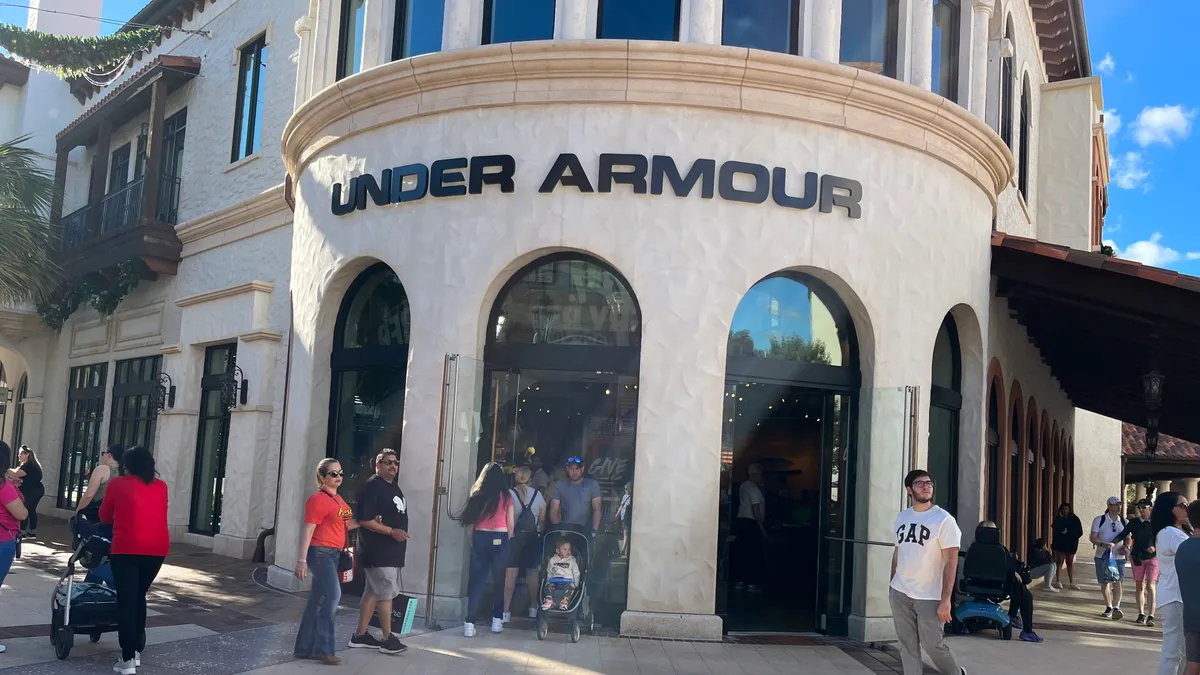Dive Brief:
- Under Armour, which on Wednesday reported roughly flat revenue of $1.6 billion, lowered its outlook for fiscal 2024 as pressures in its wholesale channel worsened since last quarter. Wholesale was down 1% in the second quarter and revenue in Under Armour’s largest region of North America was down 2%.
- DTC, on the other hand, increased 3% thanks to growth in e-commerce and owned stores, according to a company press release. Profitability improved, with net income up 26%, and CEO Stephanie Linnartz told analysts the company’s immediate priorities are improving operational efficiency and controlling costs.
- As Under Armour looks to turn things around, Linnartz said the company is shifting its marketing strategy. The retailer’s recently launched loyalty program, UA Rewards, is exceeding expectations and has already surpassed 1 million members, the executive said, noting that members are twice as likely to make a repeat purchase.
Dive Insight:
With sales down in North America and a lowered outlook for the year, Under Armour’s leadership is dually focused on the short-term priorities of improving profitability and sales, as well as long-term priorities like brand building.
Linnartz emphasized the need to improve Under Armour’s digital capabilities, including revamping the website to feature shop-the-look sections and cutting down on discounting online. The company is updating its marketing approach to include more product marketing and to take greater advantage of brand ambassadors like Steph Curry.
“We’re also seeing a lot of green shoots as it relates to our efforts in social media marketing. We want to be where that 16-to-24-year-old team sport varsity athlete is located,” Linnartz said. “We’re seeing great progress on likes and shares and engagement.”
Under Armour is working on a signature shoe for NBA player De’Aaron Fox, who signed a multiyear deal with the Curry Brand last month, and a collaboration with Bruce Lee as it works to lean more into footwear. The company plans to scale its footwear presence as part of a multiyear strategy shift to capitalize on what Linnartz sees as one of Under Armour’s biggest growth opportunities.
Investing more in footwear is just part of a much greater merchandising and design overhaul. Linnartz praised the influence of John Varvatos, who joined the company in September as chief design officer, in “driving a design-led culture” at Under Armour but said the first collections truly led by him likely wouldn’t hit shelves until the latter half of 2024.
“He has quickly added leadership maturity, direction and strength to our design organization, bringing a fresh perspective and helping us elevate our approach to our athletes’ lives outside the gym,” Linnartz said. “With the search for a new head of product underway, a new head of design and using sneaker and branding experts to add horsepower to the team, it’s about getting the right talent in the right place.”
The executive stressed that selling better product would also lead to improvements in its wholesale channel, as Under Armour starts to give retailers a reason to stock more of its products. According to GlobalData Managing Director Neil Saunders, a product overhaul is deeply needed.
“The brand tends to stray between emphasizing technical benefits and trying to be more fashion focused, which isn’t helpful for clarity. At present, it seems to be leaning more heavily into fashion and, unfortunately, some of the newer additions to the assortment are not particularly compelling in terms of either quality or design,” Saunders said in emailed comments. “This lack of discipline has long been one that has plagued Under Armour and, in our opinion, desperately needs to be remedied if the brand is to rebuild its image and build a more stable stream of revenue.”














